#The Brooklyn Rail
Photo

Robert Lax to Nancy Goldring, n.d. [1970s-1980s] [«The Brooklyn Rail»]
102 notes
·
View notes
Text
"The sea kneads my body.
The moon is low and red."
Sylvie Baumgartel, Corfu, published in The Brookyln Rail, Volume 23, Issue 9
6 notes
·
View notes
Text
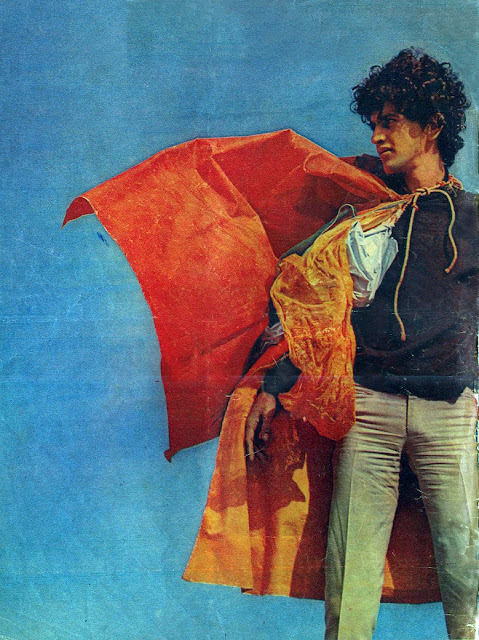
I wrote in The Brooklyn Rail about art & autocracy, and looking anew at art by artists who dealt with authoritarian violence and oppression. It feels much more relevant at the moment, and heading off all the authoritarianism we're seeing feels more urgent than ever, and even more important than it felt just yesterday.
image: Geraldo Viola's 1968 photo of Caetano Veloso wearing Helio Oiticica's Parangolé P4 Cape 1
3 notes
·
View notes
Text
In Conversation: Keelay Gipson with Marcus Scott

Keelay Gipson, an award-winning multi-disciplinary Afro-surrealist dramatist, activist, and teaching artist, knows what it means to battle your inner demons and come out the other side.
In June 2020, during the pandemic, Gipson’s mother, Gwendolyn, passed away. From the pangs of grief, Gipson began excavating and examining his life and journey as a storyteller. Born in Oklahoma City to a young, unwed mother, the prolific writer was adopted by a Black married couple from the Deep South who relocated and raised him in the idyllic suburbs of Tulsa. It was his mother that nourished his love of theater and the performing arts. Studying acting at Pace, and after a period of being relegated to roles of drug dealers, gang bangers, and sex workers, Gipson turned his focus to writing for the stage and advocating for Black people and Black lives through his work. This would eventually lead to a passionate drive as an activist, with Gipson eventually becoming a member of “We See You, White American Theater,” an anonymously-led coalition of artists that circulated a widely read set of demands for change during a cultural reckoning that saw seismic shifts in and out of the entertainment world.
Now, the award-winning scribe is on the verge of making his off-Broadway debut with the kitchen-sink drama demons., a poetic meditation on loss and legacy. The play, produced by The Bushwick Starr in association with JAG Productions, revolves around the Daimon family who have come together to bury their patriarch and exorcise the trauma passed down to them—but is it too late?
While speaking via FaceTime from his apartment in Brooklyn’s Flatbush neighborhood, Gipson was in the midst of rehearsals for DOT DOT DOT, a TheaterworksUSA musical commission based on the Creatrilogy trio of picture books by New York Times bestselling author Peter H. Reynolds, adapted with composer Sam Salmond. Below is our conversation about the glass ceiling, gatekeeping, and demons.
Marcus Scott (Rail): Can you describe the journey of going from actor to playwright?
Keelay Gipson: The journey from actor to playwright was really just me following the path of least resistance. I was a student in the Musical Theater program at Pace University (class of 2010) and didn’t find much success in booking roles in my time there. This was way before we were having these kinds of nuanced conversations surrounding race and representation in theater. So I began writing roles for myself to act. I would get folks together in an empty studio and we’d read my plays. Soon I stopped acting in them and would just listen to them. I found my voice while trying to give me and the other brown and Black folks an opportunity to be full artists during a time and in a program where that wasn’t happening.
Rail: How many plays have you written and where does demons. stand among them?
Gipson: I’ve written seven full length plays. demons. is the most recent. I began working on it in the summer of 2019 as part of a joint residency with New York Stage and Film and the Dramatist Guild Foundation.
Rail: While I have my theories—why is the name of your show called demons.?
Gipson: I grew up in a Southern Baptist household. The idea of demons. is something that has always been a part of my consciousness. As a child, I remember my dad telling stories about seeing exorcisms, and it always fascinated me. This idea that something other could be the cause of our afflictions, both mentally and physically. I wanted to toy with that idea. Honor the faith that I grew up with while reclaiming it on some level.
Rail: In a 2020 interview with JAGFest, you said “demons. was a play I wasn’t supposed to write, so I listened to the muse; I sat down and it came out of me.” Can you explain this?
Gipson: As I said, I was in residence with NYSAF and DGF at Vassar in the summer of 2019. I was there to work on another play of mine, The Red and the Black—which is a play about the rise of New Black Conservatism. I often have multiple projects going at one time. A play I’m “supposed to” be writing and a “procrastination play” [laughs]. demons. was the latter. Honestly, it was a thought experiment. I was moving squarely into my mid-thirties and I had seen friends lose parents, and I was trying to mentally prepare myself for what that might feel like. Little did I know, the play would be the precursor for my own experience with the death of a parent during the pandemic. I say, “it wasn’t the play I was supposed to write” but it was the play I needed to write.
Rail: So, what’s it about? What was the inspiration for your play demons.? I assume the loss of your mother.
Gipson: Yeah. So, the story follows a Black family after the death of their patriarch. And what I noticed in dealing with the aftermath of a death is that a lot of stuff comes up, right? So, demons. is an exploration through an Afro-surrealist lens of what comes up after the death of a family member, mainly of a parent. The things that you have to reckon with, things that maybe aren’t yours, but that you inherit. So, there’s this idea of inherited trauma, and especially with Black folks in America, what we pass down to our family members and what we leave behind when we’re no longer here. So, demons. is an exploration of all of those good things that death sort of unearths.
Rail: I followed your journey throughout the pandemic with regards to the loss. Once again, I'm very sorry for your loss, man.
Gipson: Thank you. I appreciate it.
Rail: What was your relation like to your mother?
Gipson: My mother was my biggest cheerleader. In high school, she was the president of the parent association for the drama program. She got the pass to come do a photo-call during the dress rehearsal; she would be there with her camera in the front row taking pictures, not for promotional use but for the scrapbook. Like, my mom was the one who was like, “Go to New York.” I went to New York a couple times in high school with my drama program and my mom came as a chaperone. We went and saw the shows that we saw with the theater department and then we went and saw our own shows. My mom, she loved theater and she was the one that—when we didn’t have the money and I didn’t know if I could come to New York to go to school—she pulled me aside and was like, “I’m gonna make this happen for you.” She was… she was everything.
Rail: So, you’re working on this play about Black conservatives—I think it’s hilarious cause both of us have written about Black conservatives during the pandemic, by the way—and you’ve got so many other things going on; you’re an advocate, or an “artivist” as you call yourself, being one of the figureheads behind We See You, White American Theater and the issues revolving around that, in tandem with the multiple projects you’re cultivating. So before we get into that aspect of your life, was it hard for you to kind of mentally go from one place to another place? Are you one of those writers where you have to be working on multiple projects or are you one of those writers where you can only work on one project at a time?
Gipson: I have never worked on just one project at a time. I think for me, I need something that’s completely opposite of the thing that I’m supposed to be doing. Like, if I have a commission that’s about a historical moment, then I’m gonna write something that’s wild and fanciful over here to like, break out of that—not monotony—but break out of the sort of structure that one wouldn't give me. So yeah, I’m often working on multiple things just to keep my brain limber.
Rail: That’s interesting. I see the link between The Red and the Black in your artivism, but what about this particular play with regards to it?
Gipson: This play kind of feels like a new era of my artistry. You know, I’ve written several plays that are about race, that are about Black folks dealing with race and racism, and not like, being beat down by it, but finding a way through; and I try to be honest in all of those works, but this play feels very much not a part of that pantheon. It feels like, to quote Toni Morrison, I’m taking the white person off of my shoulder. It’s not about race. It’s about Black folks. I wanna write about Blackness and all its complexity and not in relationship to whiteness or to racism. This feels like a new era of work for me, where it’s just about these Black folks in a room trying to figure out how they move forward after this thing devastates them. In the opening of the play, it says “a Black family and extremists.” Like, that’s what the play’s about. How do we relate to each other? The world sort of doesn’t come inside of the space in this play. It’s about Black folks in a space together figuring it out and not in relationship to society or the political landscape or 2022, 2023… it’s timeless in a way because death will always be true.
Rail: Let’s talk politics. Let’s get into it. There were many incidents over the last three years and many of those incidents in the industry in some way involved We See You, White American Theater. This collective has attracted the likes of Tony Award winners, the Academy Award winners, the Broadway Elite and those on the rise… What was the intention behind that? Was there a litmus for that?
Gipson: I think that during the pandemic, we had a lot of time, right? I’ll say that a lot of people had things in the pipeline and the industry was chugging along. There was no reason for it to change. It was working. Then everything stopped and we had time to look at the way that things are going. Look at our industry for real, holistically, and I think a lot of us brown and Black folks saw that it's not working, not for us, and it hasn't been for a long time. We’ve been tokenized. So, in working alongside those organizations and those movements, I was trying to galvanize other brown and Black folks who felt similarly that the industry wasn’t working for us and we could do better. Like, especially in the theater.
The theater is different than film and television because it’s people in a room breathing the same air, there are people sharing space, right? And I’ve always wondered how we can do better at sharing spaces with one another; and I’m all about community. The theater for me has always been a community-driven space. So, I wanted this community to mean what it says! I do think that it's business as usual a little bit again, which is not concerning because I think that the theater is working the way that it was designed to work. Much like a lot of things in our society. Yes, we can push back on it, but if we don’t imagine new models—like completely new models—then the old models that we’re trying to reform are always going to try to revert back to the way they were working. Cause that’s how they were built to work. So, the momentum of some of these things, like We See You… there are several organizations, I don’t want to just point to that one… but I wonder what their role is now because things kind of feel like they’re back to normal. I mean, the seven Broadway shows that were Black-led that came right out of the pandemic, that’s a great thing. But they all closed pretty early. Even with Ain't No Mo… it’s not working. So what?
It’s not us, it’s not the Black creatives. Right? It's because we know these things that we’re trying to make it better and it’s not getting better. So, it feels like it’s the model. I don't know, I think we need to imagine bigger than we are even doing now. I think we need to think magically, we’re theatremakers, right? We deal in magical thinking. I think we need to do that more when it comes to the theater because right now we’re just trying to polish a turd a little bit, it feels like. [Laughs] Like, we know it doesn’t work. And we had all of this time to try to make it work and it’s still not working. I think of the Cleveland Play House incident that just happened. And I’m like, “How, after all of this time of listening and learning, did we come to this moment?” So, we have to think magically. We need to think bigger than I think we even know.
Rail: For our readers, what are some things that we need to really look at? You mentioned the seven shows that opened on Broadway in the fall of 2021: Pass Over by Antoinette Chinonye Nwandu, Lackawanna Blues by Ruben Santiago-Hudson, Chicken & Biscuits by Douglas Lyons, Thoughts of a Colored Man by Keenan Scott II, Trouble in Mind by Alice Childress, Clyde’s by Lynn Nottage, and Skeleton Crew by Dominique Morisseau. Since that time, shows like Jordan E. Cooper’s Ain’t No Mo’, the Broadway transfer of the Asian-led musical K-Pop, MJ: The Musical (also penned by Nottage) and Adrienne Kennedy’s Ohio State Murders opened and closed on Broadway. Not to mention, Michael R. Jackson’s A Strange Loop.
Gipson: And it won every single award it could possibly win; you know what I mean?
Rail: What are some things that we can look at in general for the field? Because this is a global issue affecting Black, Brown and BIPOC people on both sides of the pond. Using a bit of magical thinking, what are some concepts, machinations or ideas that could work?
Gipson: I think it starts with audience cultivation. Honestly. I think outreach is a huge thing that theaters don’t know how to do because they rely on their subscriber base. That's the truth. The subscriber base we know is mostly older white folks who have disposable income. Millennials don’t have disposable income. And like, I'm sorry, but to get a package at one of these off-Broadway theaters, or to go to a night at the theater and get a good seat, it’s expensive. Right? So there needs to be outreach to people who can't spend a hundred dollars or five hundred dollars or a thousand dollars on a package for a season. And we need to make it cool. Honestly, theater is not cool. It’s only cool when it’s like the hottest ticket in town, right? Right? We need to figure out a way to make theater accessible to people younger than the Boomers and to Millennials that don’t have disposable income. And it’s not gonna happen with one or two nights of Affinity Nights. It’s gonna happen by putting people on late night shows! I don't know. I’m not like a marketing person but to me, it feels like there’s a disconnect between what the theater is talking about. Because once people come see these plays and get talking, that’s where the change will happen. But you gotta get people into the theater and from what I’ve seen, it’s the same people. And yes, there’s Affinity Nights, and so you can go to a Black Theater Night or an LGBTQ Theater Night and see your community. But the truth of the matter is we’re either seeing it for the second time, or it’s because it's your community, you’re finally seeing those people, but they were gonna come to the show anyway.
Rail: Ain’t that the truth. So, you are trying to appeal to a particular audience. How would you market demons.?
Gipson: I don't know. That's interesting because I couldn’t go to churches, I don't think, and market this show in the same way that like Ain’t No Mo’ might be able to. I’m a professor, so I’m going to try and get young people to see this show. Young Black people because this show’s kind of weird. I like weird stuff. Weird Black shows can be successful too. Shows that are weird and Black… there's a place for them. A Strange Loop is weird to me. I’m like, that's cool. Passing Strange, things like that. How can we take Black surrealism, things that are a little left of center, but talk about being Black in a way that is just as valid as something that’s a little more straightforward.
Rail: You’ve grown exponentially as an artist, mostly because of just the nature of the beast. Where do you think the next stage of Keelay Gipson is going?
Gipson: I hope it is still in the theater. Actually, I know it is. I think I'm working on some musicals. I know I’m working on some musicals. I’m working on a new history play about Tulsa (because I’m from Tulsa and I haven’t written about being from Tulsa and being Black from Tulsa, and I think I should do that). So musicals, a play about Tulsa and hopefully, a film or a TV show.
Rail: And if you could bring any family member to see this show, who would you bring?
Gipson: I would bring my mother. Yeah, I would bring my mother. I kind of regret—I’ve told her to wait so many times to, you know, just wait until it’s the real thing. “Don’t come to the reading, just wait till it’s the real thing.” So, I would want her to see the real thing.
Rail: Pleasure to finally meet you, Keelay.
Gipson: No, this was lovely. Thank you. Thank you.
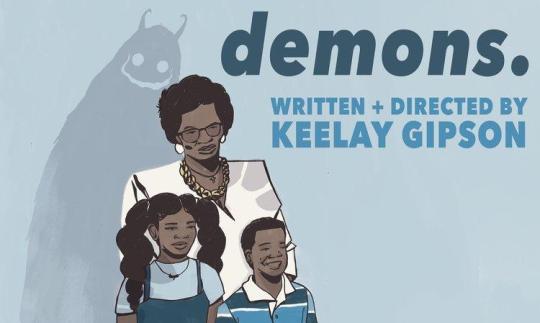
The Bushwick Starr and The Connolly Theater
demons.
May 20–June 10, 2023
Brooklyn
Contributor
Marcus Scott
Marcus Scott is a New York City-based playwright, musical writer, opera librettist, and journalist. He has contributed to Time Out New York, American Theatre Magazine, Architectural Digest, The Brooklyn Rail, Elle, Essence, Out, Uptown, Trace, Hello Beautiful, Madame Noire and Playbill, among other publications. Follow Marcus on Instagram.
#Keelay Gipson#KeelayGipson#Marcus Scott#MarcusScott#WriteMarcus#Write Marcus#Playwrights#Black Playwrights#Writers#Black Writers#The Brooklyn Rail#Brooklyn Rail
8 notes
·
View notes
Link
An edit of my “In My Dream Posts” for The Brooklyn Rail
3 notes
·
View notes
Text
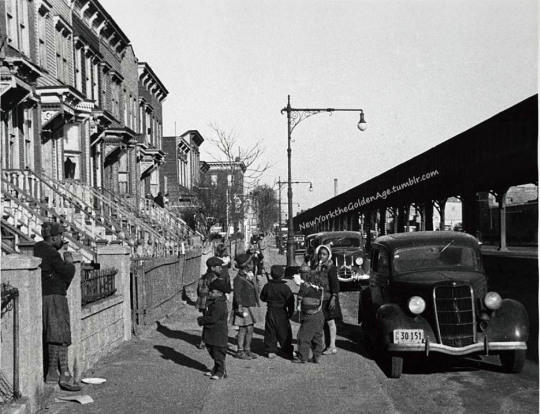
The residents of Atlantic Avenue in Bedford-Stuyvesant must have gotten used to the rushing and clanging of the Long Island Railway in front of their houses, 1940s.
Photo: Joe Schwartz via the Smithsonian National Museum of African-American History & Culture
#vintage New York#1940s#Joe Schwartz#vintage Brooklyn#Bedford-Stuyvesant#El train#elevated rail#old NYC#vintage car
52 notes
·
View notes
Video
The Return of the Brooklyn Turntable by Jeremiah Lietke
Via Flickr:
This past Friday, the SP 4449 was rotated on the former Brooklyn Roundhouse Turntable for contributors and volunteers alike. Both entities had a common goal: to refurbish and reinstall the 99 year old turntable at the Oregon Rail Heritage Center. Eleven years after being removed from Brooklyn Yards, their dream became reality. The turntable was later re-dedicated in a public event the next day.
#SP#Espee#4449#GS-4#Lima#Locomotive#Works#Brooklyn#Yard#Roundhouse#Turntable#Turn#Table#Bridge#1924#ORHF#Oregon#Rail#Heritage#Foundation#ORHC#Center#Portland#OR#Dedication#Ceremony#Rededication#Train#Steam#Loco
43 notes
·
View notes
Text
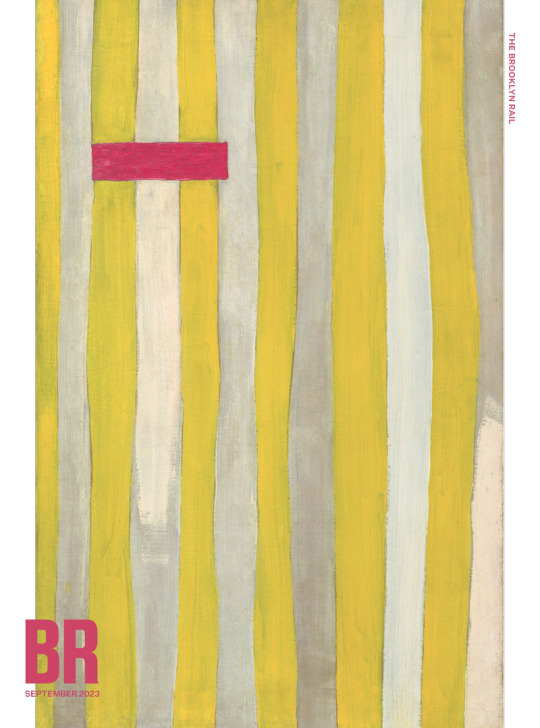
Out now.
22 notes
·
View notes
Text
Paul Chan interviews Robert Hullot-Kentor on Theodor Adorno.
3 notes
·
View notes
Text
“'Solidarity' as something we’re obligated to do by moving through contradiction.”
- Tausif Noor
Suneil Sanzgiri: Here The Earth Grows Gold, 1/19/24, Brooklyn Rail
#tausifnoor#solidarity#afroasian#suneilsanzgiri#sharpeningcontradictions#brooklyn rail#here the earth grows gold
3 notes
·
View notes
Text

Overheard 99 in background and this appeared
Bonus:
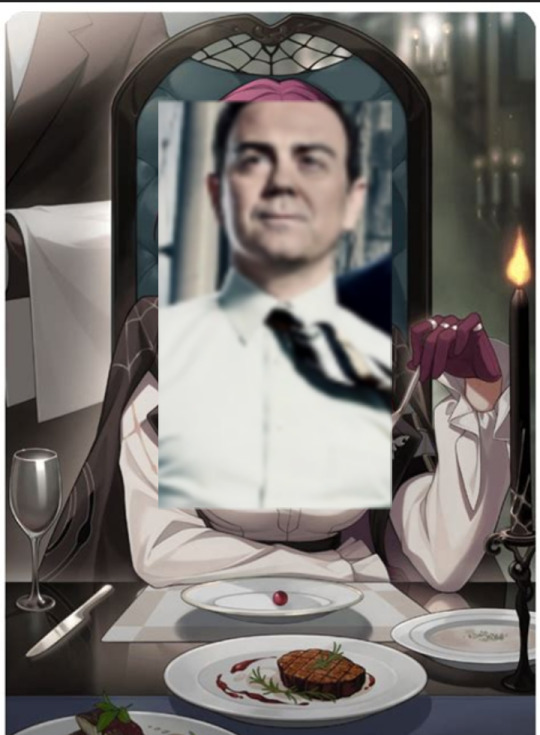
9 notes
·
View notes
Photo
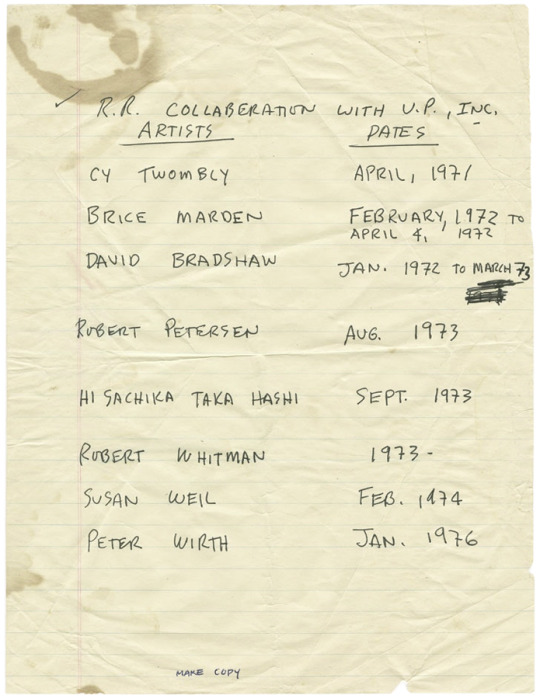
Robert Rauschenberg’s handwritten list of artists collaborating with Untitled Press, Inc., ca. 1976 [«The Brooklyn Rail». Robert Rauschenberg papers, Robert Rauschenberg Foundation Archives, New York, NY. © Robert Rauschenberg Foundation, New York, NY]
#art#manuscript#notation#handwriting#untitled press inc.#robert rauschenberg#cy twombly#brice marden#david bradshaw#robert petersen#hisachika takahashi#robert whitman#susan weil#peter wirth#robert rauschenberg papers#robert rauschenberg foundation archives#robert rauschenberg foundation#the brooklyn rail#1970s
48 notes
·
View notes
Text
"I'm finally reading all about love, and you wouldn't believe what I've learned to deify."
Brittany Adames, Locally Real, published in The Brooklyn Rail, Volume 23, Issue 9
2 notes
·
View notes
Text
Paul Mattick: "We're entering into a continuation of the downturn of 2020, which everybody describes as a COVID recession. It's true that the decision was made to stop the production and circulation of commodities, but the economy was already slowing down radically before that. If they hadn't done it on purpose, it would have happened anyway. And we are now returning to this slowdown, which you could say was interrupted by the enormous throwing of money by governments into the system. The problem is that the profitability of capital is still very low and the system is not expanding. For example, China, which started this process very late, was able ten years ago to manufacture a pseudo-prosperity by creating a real estate bubble, just like they did in Japan in 1980 and in the United States in 2007. It looked like everybody was getting rich and the economy was taking off and everything was great. But actually they were just providing credit so people could sell houses to each other.
And eventually the whole thing fell apart. It's not just something that's happening in China. The Chinese construction industry is collapsing, so Germany can't sell heavy machinery to China and Chinese businesspeople can't buy as many Mercedes as they used to buy. So you also have a contraction of the German economy happening at the same time. That has effects in the United States as well. There really is a global system which the economists forget when they're trying to analyze what's going on. There are problems in China, in the Eurozone, in the United States, or in Argentina, but, actually, it's one big system and it is not doing very well. Whoever can still make money by raising prices will do it, but others won’t be able to. They will not make a lot of money and the decline of the general economy will continue."
2 notes
·
View notes
Text
IBX: The Good, The Bad, and the Ugly
The MTA dropped their long awaited planning study for the Interboro Express (IBX) and have selected Light Rail Transit (LRT) as the preferred mode of transportation. This was hinted at months ago when a number of Twitter posts alluded to issues running Conventional Rail (CR) like subway or LIRR trains through the East New York Tunnel.
Rendering of IBX LRT at Flatbush/Nostrand Ave station.…

View On WordPress
#brooklyn#Cross Harbor Tunnel#IBX#Interborough Express#light rail#LIRR#LRT#mta#planning#queens#rail#transit
12 notes
·
View notes
Photo
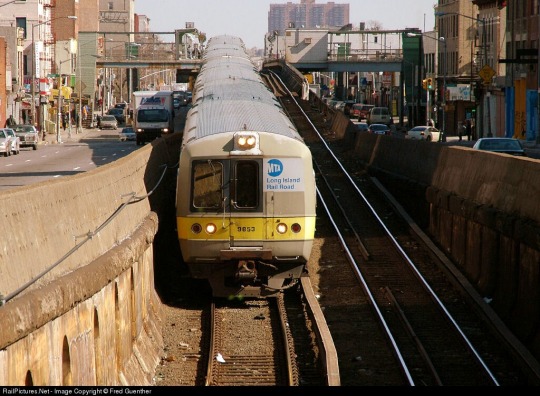
LIRR M3 train leaving Nostrand Avenue station and headed east.
Brooklyn, NY
February 20, 2006
#commuter train#lirr#long island rail road#mta#metropolitan transportation authority#2006#trains#passenger train#history#brooklyn#new york city#new york
7 notes
·
View notes